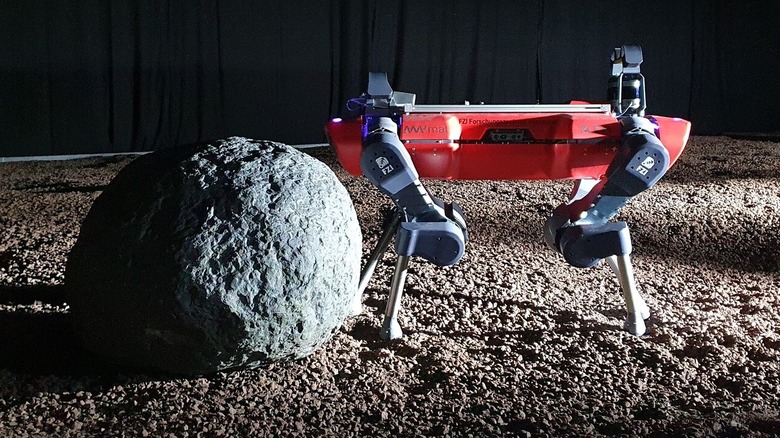13 Rovers Competed To Mine For Ice On The Moon
A battle royale of rovers could help to find new designs for mining ice and other resources on the moon. The European Space Agency (ESA) and the European Space Resources Innovation Centre (ESRIC) are hosting a challenge inviting engineering teams to develop lunar rovers, and they recently tested the submissions out in a competition here on Earth.
The challenge is to design a rover that can explore the moon's polar regions, which are known to host water ice and other volatiles. The rovers have to locate these resources and then analyze them.
To get an idea of how rovers could perform in lunar conditions, the competition used what is called an analog lunar environment –- essentially, a recreation of the moon's surface that was built inside a former aircraft hanger. Two hundred tons of lava rock were spread across a wide area, and large boulders were added to create obstacles. The rovers had to travel to a particular crater and look for resources.
"The competing rovers had to navigate and map the whole test environment to prospect for useable resources –- meaning first of all to track down their location, identify the best and safest passages to access them, then to gather information about the characteristics and the composition of the rocks they find," explained Massimo Sabbatini, who oversaw the contest's first phase.
Thirteen teams competed in this challenge, of which five teams were selected to be awarded contracts and move on to the next phase. The winning teams include groups from universities, research institutions, and private companies hailing from countries across Europe and from Canada; they're all listed on ESA's website.
Testing out moon rovers on Earth
The rovers had to move quickly through the difficult terrain to reach their goal, the organizers said. The machines only had two and a half hours to move across the landscape, find their target, and prospect for resources. "This was a challenging goal across unknown lunar terrain within the set time," said co-organizer Franziska Zaunig, who oversaw the contest's second phase.
The rovers could move in any way the engineers saw fit, and that meant there were a wide variety of designs considered. "The various teams took various approaches in terms of locomotion – we had wheeled, tracked and also walking vehicles – as well as visual and multi-spectral instrumentation, and in a few cases multiple instead of single rovers," Sabbatini said.
Some of these methods were more successful than others, according to Sabbatini, who explained that "not everyone made it to the crater at all." The reasons for these failures varied and included everything from insufficient lighting to troubles with the rovers' batteries. Despite the challenges, he said everyone involved in the effort ultimately "learned a lot."
The five winning teams will each receive €75,000 contracts to continue developing their rovers, which will be tested against each other in a second field test in September this year.
